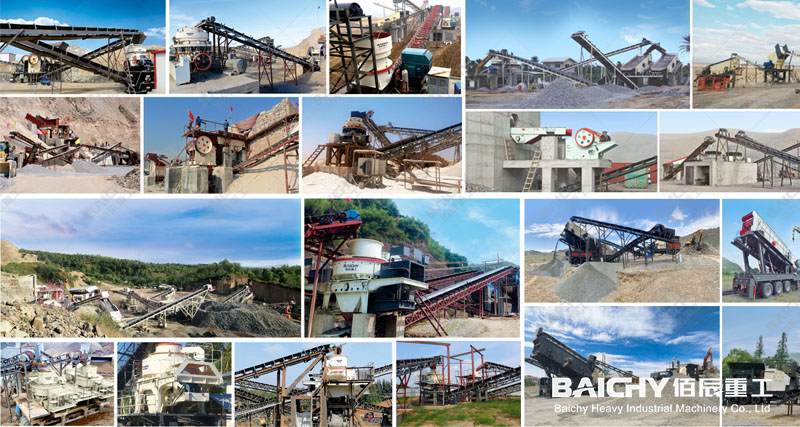
In the mining machinery field, the PF1007 impact crusher is highly favored for its excellent crushing efficiency and wide applicability. However, many users find a crucial technical parameter when selecting a model: the manufacturer's stated processing capacity is a range of 30-70 tons/hour.
This seemingly broad range actually reflects the equipment's real-world performance under different operating conditions. Furthermore, the 37-45kW motor power required also imposes specific requirements on the power supply configuration.
Impact Crusher PDF, Download ↓↓↓
I. In-depth Analysis of the Processing Capacity Range
1. The Impact of Material Characteristics on Output
1. The physical properties of the material are the primary factor affecting crushing efficiency.
Materials with lower hardness (such as limestone and gypsum) consume less energy during crushing, resulting in lower equipment operating resistance and naturally leading to output close to the 70 tons/hour upper limit. Conversely, high-hardness materials (such as granite and basalt) significantly increase hammer wear and equipment load, causing output to drop to around 30 tons/hour.
2. The Limiting Effects of Humidity and Viscosity:
When the material's moisture content exceeds 5%, it easily adheres to the inner wall of the crushing chamber and the screen plate, reducing the effective throughput area and increasing the time required to clear blockages. Especially for materials with high clay content, pre-drying is recommended to ensure a stable output of over 40 tons/hour.
3. The Inverse Relationship Between Finished Product Particle Size Requirements:
There is a clear inverse relationship between the crusher's output particle size and its output. When the required finished product particle size is ≤20mm, the equipment needs to extend the material's residence time in the chamber, achieving fine crushing through multiple impacts, resulting in an output of approximately 30-40 tons/hour. However, when the allowable output particle size is relaxed to 40-50mm, the material throughput speed increases, and the output can be increased to 60-70 tons/hour.
4. Key Variables in Equipment Configuration:
The type of hammer and its rotational speed directly affect crushing efficiency. New composite alloy hammers, combined with an adjustable-speed rotor, can optimize impact energy for different materials, reducing output fluctuations to within 15% and significantly improving operational stability.
5. Refined Control of Operating Processes
Uniform feeding is crucial for ensuring rated output. Using a vibrating feeder with hopper baffles avoids cavities or overload, keeping the equipment at its optimal load and improving efficiency by over 20% compared to manual feeding.
6. Combined Impact of Environment and Maintenance
High-altitude areas experience reduced motor power due to thin air, resulting in a 5-10% decrease in output. Regularly checking screen gaps and bearing condition prevents efficiency losses due to component wear.
II. Professional Solutions for Motor Power Configuration
1. Circuit Design Specifications
The 37-45kW motor equipped in the PF1007 falls into the power range of medium-sized industrial equipment and requires a dedicated power line. It is recommended to use YJV-3×25+1×16mm² or higher specification cables and install an independent circuit breaker (rated current 100A or higher). For sites with a power supply distance exceeding 100 meters, voltage drop compensation must be calculated to ensure the terminal voltage is not lower than 95% of the rated value.
2. Comparative Analysis of Starting Schemes
• Star-Delta Starting: As an economical solution, it limits the starting current to 1/3 of full-voltage starting, but still has a 30% torque surge. Suitable for applications with sufficient grid capacity.
• Soft Starter: Achieves smooth acceleration through thyristor voltage regulation, controlling the starting current within 2.5 times the rated current, effectively protecting the mechanical transmission system.
• Variable Frequency Starting: The optimal solution, enabling stepless adjustment from 0 to rated speed, combining energy saving and precise control advantages, particularly suitable for frequent start-stop conditions.
3. Integrity Design of the Protection System
In addition to conventional overload and phase loss protection, it is recommended to add a temperature sensor to monitor bearing temperature rise, combined with a vibration monitoring device to form multiple protections. For dusty environments, an explosion-proof control box with an IP54 or higher protection rating should be selected.
4. Energy Efficiency Optimization Practices
By adding a reactive power compensation device to improve the power factor to above 0.92, line losses can be reduced by 15-20%. Actual test data shows that the PF1007, using frequency conversion control, can save 18% more electricity than a direct start system under fluctuating material flow conditions.
III. Typical Case Analysis
A granite quarry originally used a direct start system, with output hovering around 28 tons/hour and experiencing 3-4 shutdowns per month due to electrical faults. After upgrading to frequency conversion control and optimizing the hammer layout, output stabilized at 45 tons/hour, power consumption decreased by 22%, and the continuous operating cycle of the equipment was extended to more than 3 months.
The PF1007 impact crusher's processing capacity range of 30-70 tons/hour reflects the equipment's adaptability. Through scientific analysis of material characteristics and optimized configuration, users can stabilize output within the ideal range. Furthermore, professional electrical design not only ensures stable equipment operation but is also key to energy efficiency optimization. It is recommended that users consult professional engineers before equipment installation to conduct on-site surveys and customized solution design.












